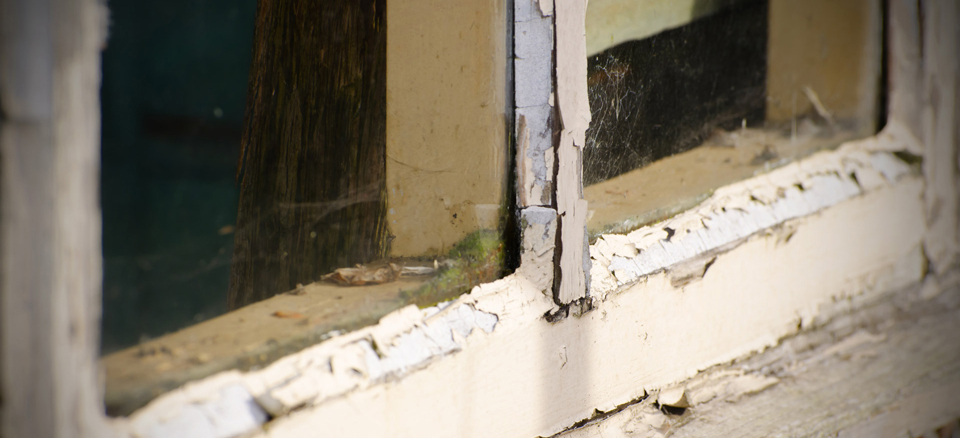
We’ve previously covered how the water fed pole system works and why you should use it, and it’s generally been accepted by most window cleaners as the industry standard. However, many window cleaners have reported and continue to report that the system doesn’t quite perform as they expected – either consistently or inconsistently leaving spotting, watermarks and streaks on glass after cleaning.
The science behind pure water window cleaning is solid, and when the system is setup and used properly, it produces exceptional results. So problems with the finish left by the pure water system are usually caused by other variables. In this article, we’ll look at 6 of the most common ones, and give you a few window cleaning tips that aim to help you resolve any issues you may be experiencing.
Water Purity
We’ll start with the most obvious one. The water fed pole system relies on using pure, or very near-pure water. Using water with purity levels as close to 000PPM (parts per million) as possible ensures the best possible results. If you’re experiencing poor results after a window has dried it could be down to the purity of your water.
Remember that your deionisation resin is responsible for “polishing” off the last few PPM’s of impurities in your water. As resin “wears out”, it tends to stop performing rapidly, rather than gradually, so worn out resin can be responsible for quick changes in your water purity that might be easy to miss. Check it every time you fill your tank up using a good quality TDS meter, and stay on top of replacing your resin before it has too much of an impact on your water purity.
If you produce water into a static tank, test the purity before and after you’ve transferred it to your vehicle to check it isn’t being contaminated by the transfer pump or hosing. You might also want to test water purity as it leaves your water fed pole for the same reason.
Poor Technique
Like any tool, the pure water system has to be used with the correct technique to achieve perfect results in all scenarios. Failure to do so will lead to poor results. Read our article on the correct way to use a water fed pole.
Rinse
Very closely related to technique, rinse – or lack of, is one of the most common causes of poor results. When pure water lands on a dirty window, it very quickly becomes impure. If that impure water is not replaced with pure water, then dirty water is left to dry on the windows with results you’d expect. Ensure that once you have cleaned the window, you rinse it thoroughly, methodically covering it several times.
Soap / Detergent Residue
Despite your best efforts to use the correct technique and rinse thoroughly, you might have noticed mysterious streaks left on the window once dry. This can often be down to soapy residues left behind in the seals of the window you’re cleaning, usually from years of being cleaned by traditional methods. The tell tale sign of this is water foaming or “sudding” up on the glass – though this isn’t always the case. Be especially aware of this with new customers and where you’re cleaning windows for the first time. Where you suspect soap residues are going to be an issue, you can usually prevent any issues with extra brushing and rinse. Despite that, sometimes it takes a couple of cleans for windows with this problem to return good results, so preempt the problem and prewarn your customer, clearly explaining the cause.
Window Vents
Without proper care and attention, window vents can cause problems for pure water window cleaners. Usually located above windows and full of dirt, inadvertently spraying water into a window vent can leave dirt running down a window you’ve just cleaned long after you’re gone. Learn to spot the various different types of window vents, keep your jets well away from them and try and avoid getting them wet if you can, even it it means not cleaning the frame around the vent. Go back over a window and rinse it again before you leave if you suspect a vent may cause a problem. You’ll learn what types of vent cause the most issues and how best to get around them.
Oxidised Residues
Window frame materials like Aluminium as well some paints oxidise and degrade over time, leaving a powdery residue that is easily disturbed by your water fed pole brush. Warning signs of this problem include your water turning cloudy as you clean a window. These residues can continue to run onto the glass after you’ve cleaned the window, again affecting your finish. When cleaning windows with this problem, try to (contrary to standard technique) avoid brushing or wetting the frame above the glass as much as possible. Use extra rinse and clean your brush regularly. Be aware of this when quoting up jobs – running a finger along a dry frame and checking for white, powdery residue will give you an idea of the extent of the problem. Particularly bad cases may not be suitable for cleaning with the water fed pole system.
The above causes are most commonly responsible for poor results when using the water fed pole system. Our window cleaning tips article on using the water fed pole system properly will also help you make sure you’re using the correct technique and ensuring the best possible results at all times.

